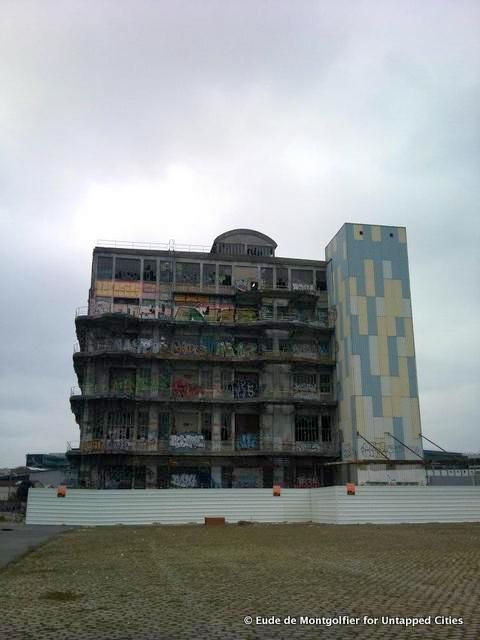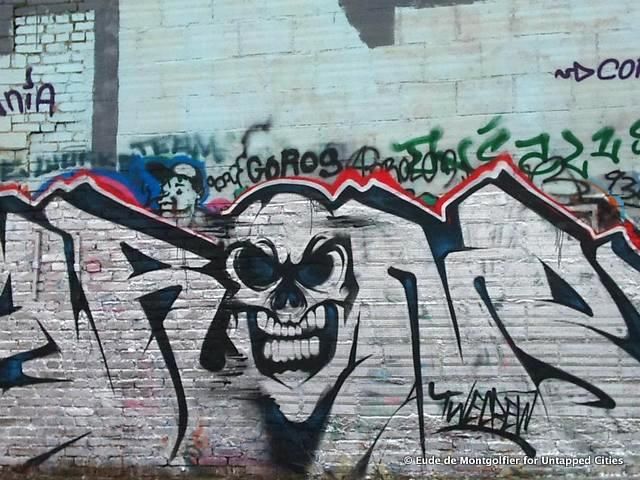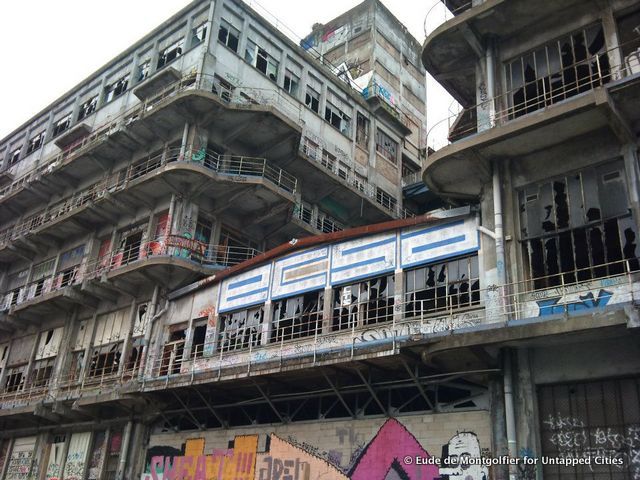The Berkshires Bowling Alley that Inspired "The Big Lebowski"
It’s been 36 years since the release of The Big Lebowski, the irreverent cult comedy by Joel and Ethan


You may remember the Untapped Paris article about Guerilla String Art on an Abandoned Bridge in Northeast Paris, which looked at an example of street art in the 19th arrondisement of Paris that remains rather unknown to visitors, mostly because there is no mention of it in mass-circulation travel books. If this type of exploration interests you, I recommend that you keep going for a good two kilometers (around 20 minutes) on the right side of the remodelled banks of the Canal de l’Ourcq — that one crossed by the abandoned bridge depicted in the article. The railroad bridge is actually a remaining work of art of the so-called Petite Ceinture, a former metropolitan inner-loop railroad on which passenger services have definitively been suspended since the mid 1930s.


After passing the Périphérique (the Paris ring road) and the newly refurbished Grands Moulins de Pantin on your left, followed by the Centre National de la Danse, you will reach nothing less than one the most astonishing brownfields in the close outskirts of Paris. You will be impressed firstly by the massive abandoned building that stands up against you while arriving, secondly by the purely magnificent street art covering the neglected walls of the old industrial buildings that define the perimeter, not unlike the famous graffiti haven called 5Pointz in Queens, New York.

In Pantin, the building whose structure has remained pretty intact so far was erected between 1929 and 1931 in a remarkable Modernist/Art Deco style as enlargement works of the canal were undertaken. It is a large complex, no less than 25,000 square meters, composed of two distinctive buildings divided over six floors, linked to each other by footbridges. As its shape and location suggests, the building, at the time run by the Compagnie des Entrepà´ts et Magasins Généraux, was used for grain and flour storage, when Pantin was still playing a major role in supplying the capital. The wares were directly transported from the loaded barges into one of the distribution towers by pneumatic equipment. This would explain its strategic position along the canal similar to that that of its brother building, Les Grands Moulins de Pantin, on the opposite bank, recently refurbished to host BNP Paribas’s Real Estate Headquarters.

The building is located in an area that is undergoing a redevelopment program that has been ongoing since the mid 1990s with the conversion of a former administrative centre building, designed by French architect Jacques Kalisz in 1972, into the now very renowned dance school Centre National de la Danse a few meters downstream from the canal. The main building as well as the surrounding walls and adjacent factory-buildings are a canvas for street artists. Fully tagged, it has become a symbol of urban décor.
Both Pantin’s city council and developer contractors have started to look into the building’s renovation and decided to launch an open consultation for the renovation not only of the edifice but also of the entire site (the so-called ZAC du Port), through which architects and designers have been invited to submit their projects. The Jung Architectures Agency has proposed a colourful project that would illuminate the canal whereas the École nationale supérieure d’Architecture de Versailles thought about transforming the edifice into a cultural centre for disabled people with apartments. Although Pantin’s mayor has officially announced last year that the Magasins Généraux would at last be renovated, the winning design has yet to be unveiled.
It is left for the intrepid to enjoy the site in its current incarnation, to make any artistic or touristic benefit from its frescos before bulldozers might get rid of it. Let us hope they will think about saving some of the major masterpieces.

Magasins Généraux
201 Avenue Jean Lolive
F-93500 Pantin
Pedestrian access by the Chemin de Halage along the canal
Eglise de Pantin metro stn. (line 5) or Pantin suburban train stn. (RER E)
For more information, check out articles on Pantin by Invisible Paris and the Atlantic Cities.
Subscribe to our newsletter